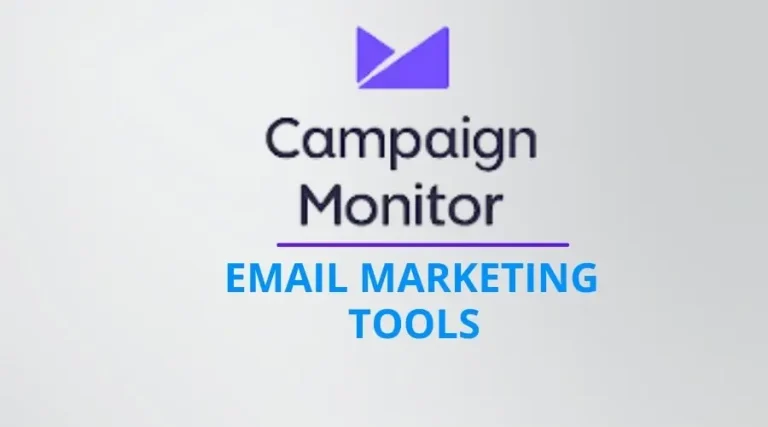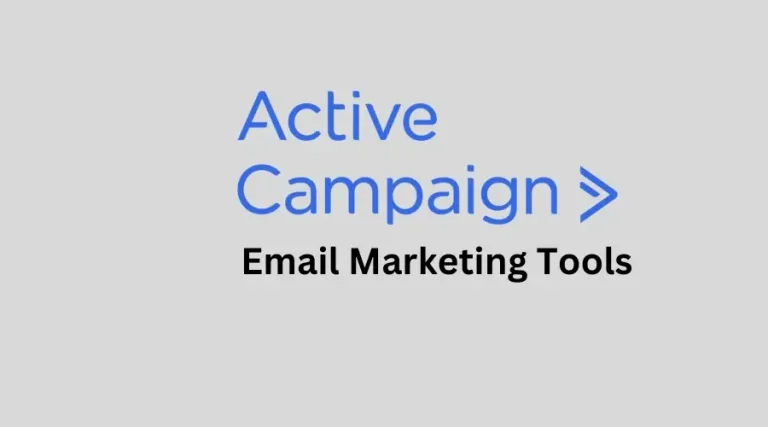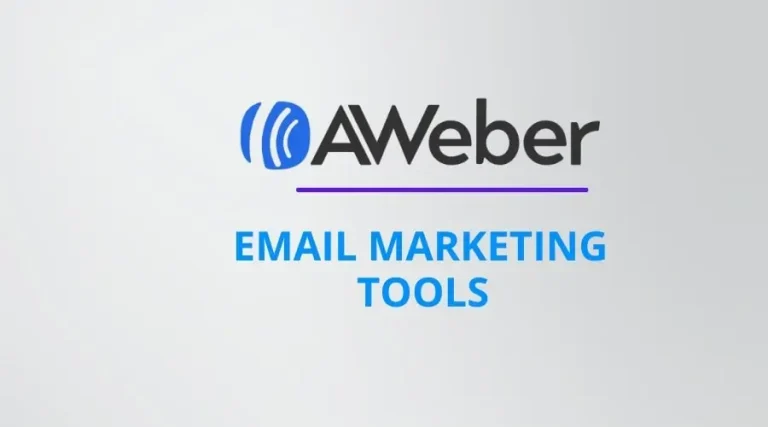Email marketing tools assist businesses in creating, sending, and analyzing email campaigns. They enhance engagement and convert leads into sales.
In the realm of digital marketing, email marketing tools are indispensable for nurturing customer relationships and driving sales. With the rise of digital communication, email has remained a steadfast means of reaching out to both existing and potential customers. Entrepreneurs and marketers alike rely on these tools for a variety of functions, from automating email sequences to segmenting audiences and personalizing messages.
Email marketing platforms offer rich analytics to help businesses understand campaign performance, optimize their strategies, and achieve a higher ROI. Crafting compelling newsletters and promotions has never been easier, thanks to user-friendly interfaces and customizable templates that these tools provide. As a cost-effective solution for businesses of any size, email marketing tools are key to effective digital strategy and customer engagement.
Why Email Marketing Tools Matter
Email marketing tools are the unsung heroes of the digital marketing world. They’re the bridge that connects your brand to the consumer’s inbox, with the potential to turn a casual browser into a loyal customer. Understanding why email marketing tools matter is crucial in unlocking the full potential of digital communication and harnessing the power of personalized content delivery.
Cost-Effective Marketing
Email marketing tools present an incredibly affordable way to reach out to customers compared to other marketing channels. They allow you to send thousands of messages at a fraction of the cost of traditional mail or paid advertising. With features like automation, tracking, and analytics, these tools make it possible to maximize the return on investment with minimal spend. Let’s look at some of the cost-related benefits:
- Low startup costs: No need for a large budget to get started
- Scalability: Adjust campaigns based on budget without compromising reach
- Automated campaigns: Save on manpower with triggered responses
Targeted Audience Engagement
One of the most significant advantages of using email marketing tools is the ability to engage with your audience in a targeted and personal way. Instead of casting a wide net with a generic message, you can tailor your emails based on customer behavior, preferences, and past interactions. This personal touch can lead to higher engagement rates. Here’s how targeted audience engagement plays a crucial role:
| Feature | Benefit |
|---|---|
| Segmentation | Divide audience into groups for personalized campaigns |
| Personalization | Address recipients by name and reference past actions |
| Behavioral Tracking | Send relevant content based on user behavior |
Understanding Your Business Needs
Email marketing is a dynamic and powerful way to connect with your audience, but success stems from a solid understanding of your own business requirements. Before diving into the plethora of tools available, it’s crucial to align your email marketing strategy with what your business truly needs. Whether you’re a small startup or a large corporation, getting to grips with your goals and resources will streamline your marketing efforts. Identifying Your Goals
Identifying Your Goals
When crafting an email marketing strategy, the first step is to map out clear, actionable goals. Ask yourself:
- What do you want to achieve? Brand awareness, lead generation, customer retention?
- What are your targets? Consider metrics like open rates, click-through rates, and conversion rates.
These targets become the beacon that guides your choice of email marketing tools. For instance, if your aim is to grow your subscriber list, you’ll need a tool with robust opt-in form capabilities. Similarly, for customer education, look for platforms offering sophisticated automation to deliver content series. Evaluation of Current Resources
Evaluation Of Current Resources
Understanding your current infrastructure and resources is vital to determining what additional tools your business requires. Conduct an audit:
| Resource | Availability | Requirement |
|---|---|---|
| Technical expertise | Present / Lacking | Complex solutions or user-friendly tools? |
| Database | Robust / Needs improvement | Integration with CRM or standalone? |
| Budget | High / Moderate / Low | Is cost-effectiveness key? |
This evaluation will help identify gaps in your marketing strategy, be it a lack of skilled personnel or the need for more sophisticated technology, guiding your decision towards the best-suited email marketing tool.
Key Features To Look For In Email Marketing Tools
Successful email marketing campaigns rely heavily on the tools employed. Marketers need a strong set of features at their disposal to create, manage, track, and optimize their email strategies effectively. When sifting through the plethora of available email marketing tools, certain key features stand out as essential for driving engagement and maximizing campaign performance. Identifying these capabilities simplifies the selection process, ensuring that the chosen tool meets and exceeds business needs.
Automation Capabilities
Automation features in email marketing tools can transform how businesses connect with their audience. These capabilities allow for:
- Scheduled emails that reach recipients at optimal times
- Trigger-based autoresponders following specific user actions
- Drip campaigns to nurture leads step by step towards conversion
Efficient automation saves time and personalizes the user experience without the need for constant manual intervention.
Personalization Options
Email personalization is crucial for connecting with recipients on a more individual level. Personalization options should include:
- Custom field insertion, such as names or past purchase history
- Segmentation tools for targeted campaigns based on user data
- Dynamic content that changes based on subscriber preferences
Dynamic and personalized content have been shown to significantly boost open and click-through rates, making them vital features for any email marketing tool.
Analytics And Reporting
Comprehensive analytics and reporting are indispensable for assessing the success of email marketing campaigns. Key metrics often include:
| Metrics | Importance |
|---|---|
| Open rates | Measures recipient engagement |
| Click-through rates | Indicates the effectiveness of content |
| Conversion rates | Reveals the actual impact on sales |
With robust reporting features, marketers can easily track the success of their campaigns and make data-driven decisions to improve future efforts.
best email marketing tools lookinglion
Mailchimp
Mailchimp’s email marketing tools offer a user-friendly drag-and-drop editor, advanced segmentation for targeted campaigns, and automation capabilities for time-saving workflows. Robust analytics provide actionable insights, while A/B testing refines content strategies.
Personalization, responsive design, and seamless integrations enhance engagement, reaching audiences across devices and platforms. E-commerce integration, social media connectivity, and multi-channel marketing expand outreach.
Efficient list management ensures organized subscriber data, and customizable templates align with brand aesthetics. With a focus on compliance, security, and responsive customer support, Mailchimp equips businesses with a comprehensive toolkit for successful email marketing campaigns.
Getresponse
GetResponse is an all-in-one marketing platform that provides email marketing, automation, and webinar solutions. With its easy-to-use interface and advanced segmentation options, businesses can create personalized and impactful campaigns.
The platform also offers a responsive email design, landing pages, and comprehensive analytics for tracking campaign performance.
Aweber
AWeber is a reliable email marketing tool known for its strong deliverability and extensive template library.
Its advanced automation features, tag-based subscriber segmentation, and robust reporting make it a great choice for businesses looking to enhance their email marketing strategy.
With easy integration options and responsive customer support, AWeber stands out as a top contender in the email marketing space.
Sendinblue
Sendinblue offers a comprehensive suite of marketing tools including email marketing, SMS marketing, and CRM.
Its intuitive drag-and-drop editor, marketing automation, and transactional email capabilities empower businesses to create effective and personalized campaigns.
With its robust deliverability and affordable pricing, Sendinblue is a noteworthy choice for businesses aiming to connect with their audience across multiple channels.
Activecampaign
ActiveCampaign is a versatile email marketing platform that combines email marketing, marketing automation, and CRM tools.
The platform’s powerful automation features, predictive sending, and detailed reporting help businesses optimize their campaigns for better results.
Additionally, ActiveCampaign’s lead scoring and pipeline management features provide valuable insights to marketers for effective campaign targeting and nurturing.
Benchmark Email
Benchmark Email offers an easy-to-use email marketing platform with a focus on responsive email design and robust deliverability.
The platform’s drag-and-drop editor, list management capabilities, and real-time reporting make it a preferred choice for businesses seeking intuitive and effective email marketing solutions.
With its affordable pricing and responsive support, Benchmark Email is a strong contender in the email marketing landscape.
Zoho Campaigns
Zoho Campaigns is a feature-rich email marketing platform that offers a seamless integration with Zoho’s suite of business applications.
Its template library, workflow automation, and campaign scheduling features enable businesses to create and deliver engaging email campaigns effectively.
Zoho Campaigns’ comprehensive reporting and A/B testing capabilities make it a suitable choice for businesses looking to measure and optimize their email marketing efforts.
Sendgrid
SendGrid is a cloud-based email delivery platform that provides reliable email delivery and scalability for businesses of all sizes.
Its email API, email template editor, and advanced deliverability tools ensure that businesses can create and deliver engaging email campaigns with high deliverability rates.
With real-time analytics and actionable insights, SendGrid empowers businesses to optimize their email strategy for better engagement and conversion rates.
Campaign Monitor
Campaign Monitor is a powerful email marketing platform known for its ease of use and customizable templates.
Its drag-and-drop interface, personalization options, and segmentation capabilities enable businesses to create targeted and visually appealing email campaigns.
The platform’s detailed engagement metrics and automation features contribute to its appeal for businesses aiming to drive meaningful customer interactions through email marketing.
VerticalResponse
VerticalResponse is a user-friendly email marketing platform that offers a wide range of email campaign management features.
Its customizable email templates, list segmentation options, and social media integration make it an ideal choice for businesses seeking a simple yet effective email marketing solution.
The platform’s reporting and analytics tools provide valuable insights to businesses for measuring and improving their email marketing performance.
Utilizing Data Analytics For Optimization
In the ever-evolving world of email marketing, harnessing the power of data analytics is crucial for campaign success. Marketers need to delve into the numbers, interpret complex data sets, and implement findings to fine-tune their strategies. By utilizing robust email marketing tools equipped with data analytics features, you can unlock potent insights, drive higher engagement rates, and boost conversions. Let’s explore how tracking key metrics and testing and optimizing strategies through data analytics can significantly elevate your email marketing campaigns.
Tracking Key Metrics
Effective email marketing campaigns hinge on a marketer’s ability to track and analyze key performance indicators (KPIs). Understanding these metrics is essential to gauge the health of your campaigns and make data-driven decisions.
- Open Rates: A clear indicator of how compelling your subject lines are, leading recipients to click and read.
- Click-Through Rates (CTR): Insight into how engaging your content or offers are once the email is opened.
- Conversion Rates: Measures the percentage of recipients who took the desired action, reflecting direct campaign success.
- Bounce Rates: Tracked to maintain list hygiene by pinpointing delivery issues.
- Unsubscribe Rates: Alerts to potential content relevancy or frequency issues.
By tracking these metrics, marketers can pinpoint successes and areas requiring attention, enabling the refinement of future campaigns for better performance.
Testing And Optimizing Strategies
Testing various elements within email campaigns is essential to understand what resonates best with your audience. Regularly employing A/B testing or multivariate testing on different email components ensures that your optimization efforts are based on concrete data.
- Test subject lines to see which garners more opens.
- Experiment with email layouts and designs to enhance engagement.
- Vary call-to-actions (CTAs) to determine which prompts more clicks and conversions.
- Alter the sending times and days to find the optimal window for your audience.
- Modify content length and formatting to maintain interest and readability.
Continuous optimization based on testing results is a dynamic way to improve your email marketing effectiveness. Applying insights from data analytics propels strategy adjustments that lead to achieving measurable improvements in user engagement and ROI.
Ensuring Compliance And Deliverability
Email marketing remains a cornerstone of digital marketing strategy, driving engagement and conversions with measurable impact. However, its success hinges on two critical aspects: compliance with regulations, and ensuring messages reach the intended inboxes. The right tools play an instrumental role in achieving both, allowing for smooth and responsible communication with your audience.
Can-Spam Compliance
The CAN-SPAM Act sets rules for commercial email, establishing requirements for commercial messages, and giving recipients the right to stop receiving emails. Email marketing tools that prioritize compliance can help protect your business from potential fines. Look for features that:
- Automatically include an unsubscribe link in every campaign
- Ensure proper identification of the email as an ad
- Provide a valid physical postal address of the sender
These tools maintain your reputation by following regulations, keeping your emails away from spam folders and recipients content.
A/B Testing Subject Lines
A/B testing for email subject lines uncovers what resonates best with your audience, directly impacting open rates and by extension, campaign success. Email marketing tools offering this feature allow marketers to send two variations to a small segment of subscribers. You can track:
- Open rates: Measure which subject line entices more opens
- Click-through rates: Determine which subject line drives more traffic
- Conversion rates: Understand which subject line leads to more actions
Through this data, tools help refine messaging for optimal deliverability and engagement.
Managing Subscriber Lists
Effective subscriber list management is the backbone of email deliverability. Email segmentation and list hygiene prevent bounces and reduce spam complaints, sustaining sender reputation. Key functionalities in marketing tools for managing lists include:
| Function | Benefit |
|---|---|
| Segmentation | Tailor content to diverse subscriber groups, increasing relevance |
| List Cleaning | Remove inactive or unengaged subscribers to boost deliverability |
| Update Preferences | Enable subscribers to adjust their email preferences, reducing opt-outs |
These tools ensure your emails reach engaged audiences, thereby improving campaign performance while adhering to best practices.
Aligning Email Campaigns With Content Marketing
Email Marketing Tools are pivotal in seamlessly integrating your marketing efforts for better results. A well-coordinated strategy where email campaigns align with content marketing not only ensures a consistent message across platforms but also significantly boosts reader engagement. Let’s dive into how this powerful synergy can be achieved by focusing on a couple of strategic elements.
Content Calendar Synchronization
Aligning your email campaigns with your content marketing begins with synchronized planning. A content calendar acts as a roadmap for both creating content and organizing email campaign schedules. To ensure seamless integration:
- Plan Content and Email Campaigns Together: Develop a unified content calendar that includes blog posts, social media updates, and email newsletters. This approach ensures that your audience receives a coherent narrative.
- Automate Scheduling: Use email marketing tools capable of automating email dispatch to coincide with your content’s go-live dates. Tools like Mailchimp and HubSpot offer features to schedule emails effectively.
- Promote Fresh Content: Email alerts about new content keep subscribers informed and engaged. Integrate RSS-to-email functionalities to automatically send out updates when new content is published.
By synchronizing your email campaigns with your content marketing calendar, you can maintain a consistent flow of content that keeps your audience informed and eager to see what’s next.
Leveraging Subscriber Insights
Email marketing tools offer rich analytics that can inform both your email strategy and content creation. Here’s how to leverage these insights:
- Segment Your Audience: Group subscribers based on their behaviors, preferences, and engagement levels. Tailor your emails and content to these segments for improved relevance and impact.
- Analyze Performance Data: Review open rates, click-through rates, and conversion metrics to understand what content resonates with your audience. Use this data to shape future content topics and email marketing strategies.
- Collect Feedback: Solicit subscribers’ opinions through surveys and feedback forms. This not only deepens subscriber relationships but also provides direct input into what content they find valuable.
By integrating subscriber insights into your content marketing strategy, your emails become more than just a communication tool; they evolve into a powerful mechanism for delivering targeted and desired content to your audience.
Utilizing Email Tools In Sales And E-Commerce
In the fast-paced realm of sales and e-commerce, email marketing tools are essential for engaging with prospects and converting them into loyal customers. These innovative tools go beyond simple correspondence; they enable businesses to automate communications, track customer interactions, and optimize marketing strategies for maximum impact. Segmenting audiences, personalizing messages, and analyzing data are now foundational to success in digital commerce. With the right email tools, sales teams can streamline their processes and e-commerce brands can drive growth like never before.
Lead Nurturing Workflows
Lead nurturing workflows are the automated pathways that guide potential customers through the sales funnel. These are critical for keeping your brand at the forefront of your leads’ minds and gently coaxing them towards a purchase decision.
- Segmentation: Use email tools to categorize leads based on their behavior, preferences, and engagement level.
- Personalization: Tailor emails to address individual user interests, which can significantly improve open and click-through rates.
- Content delivery: Automate a series of relevant and valuable content that educates and informs your audience, establishing trust and authority.
- Performance tracking: Monitor how leads interact with your emails to continually refine and enhance your nurturing strategies.
Cart Abandonment Strategies
Shopping cart abandonment is a common challenge in e-commerce, with customers often leaving items unpurchased. Implementing effective cart abandonment strategies through email can recapture these potential sales, directly influencing the bottom line.
| Strategy | Description | Expected Impact |
|---|---|---|
| Reminder Emails: | Send a friendly reminder to customers who left items in their cart, incentivizing them to complete the purchase. | Increase conversion rates by reminding customers of their initial interest. |
| Discount Offers: | Provide a time-sensitive discount or free shipping to encourage customers to act quickly. | Create urgency and provide a nudge towards completing the transaction. |
| Product Recommendations: | Showcase similar or complementary products that might interest the customer. | Upsell and cross-sell opportunities to increase average order value. |
| Feedback Queries: | Ask customers for reasons for abandonment to address potential obstacles. | Gather insights to improve the shopping experience and reduce future abandonment. |
Combining these strategies into a coherent and dynamic email campaign taps into the power of behavior-triggered communication, which is vital for e-commerce success. By analyzing customer data and responding with targeted personalized emails, businesses can significantly reduce cart abandonment rates and foster customer loyalty.
Tips For Effective Email Marketing
Email marketing stands as a powerful tool for businesses. To tap its full potential, apply these tried-and-true tips. Success hinges on the right strategy.
Building A Responsive Email List
Grow your email list organically. Provide value through a compelling newsletter or an enticing lead magnet.
- Use sign-up forms on your website and social media pages.
- Offer discounts or free resources in exchange for email addresses.
Ensure legal compliance by using double opt-in methods. It confirms the user’s interest and protects against spam.
Segmentation And Personalization
Boost engagement by segmenting your audience. Create personalized experiences that resonate.
- Analyze customer data to identify unique characteristics.
- Create targeted segments based on customer behavior or preferences.
Personalize emails with recipients’ names and relevant content. It makes them feel special and increases open rates.
Creating Engaging Email Content
Catchy subject lines are key to compelling opens. Keep them short and sweet.
| Element | Tips |
|---|---|
| Subject Line | Use powerful words and evoke curiosity. |
| Email Body | Make it visually appealing with images and short paragraphs. |
| Call to Action | Be clear, concise, and place it prominently. |
Email content should provide value. Inform, educate, or entertain your subscribers consistently.
Analyzing And Optimizing Campaigns
Use analytics to make informed decisions. Look at open rates, click-through rates, and conversions.
- Test multiple variation of emails with A/B testing.
- Measure performance and adapt your strategy accordingly.
Regularly clean your email list to maintain high deliverability. Remove inactive subscribers to improve engagement metrics.
Frequently Asked Questions Of Email Marketing Tools
What Are The Best Email Marketing Tools Available?
Popular email marketing tools include Mailchimp, Constant Contact, and SendinBlue. They offer automation, analytics, and user-friendly interfaces.
How Do Email Marketing Tools Improve Engagement?
Email marketing tools provide analytics to track opens, clicks, and conversions. This helps tailor campaigns to increase subscriber engagement effectively.
Can Email Marketing Tools Integrate With Other Software?
Yes, most email marketing tools can integrate with CRMs, eCommerce platforms, and other marketing software, streamlining campaign management and data analysis.
What Features Do Advanced Email Marketing Tools Offer?
Advanced tools offer features like A/B testing, segmentation, personalized content, and autoresponders. These enhance campaign effectiveness and customer targeting.
Conclusion
Selecting the right email marketing tool is crucial for campaign success. Efficiency, features, and cost are key considerations. Your choice will shape customer engagement and ROI. Invest in a tool that aligns with your marketing strategy for the best results.
Start optimizing your email outreach today!






